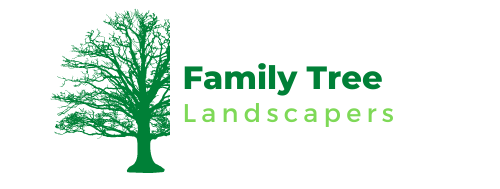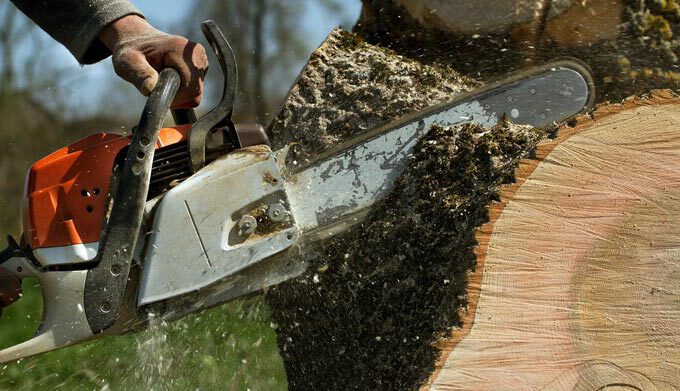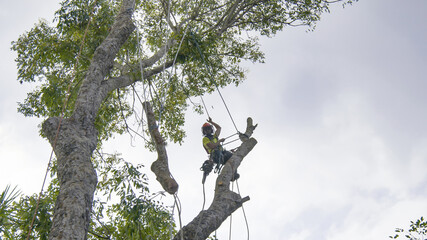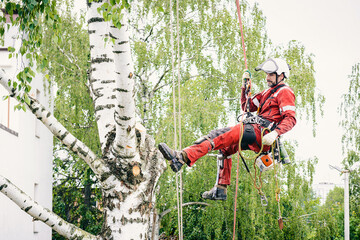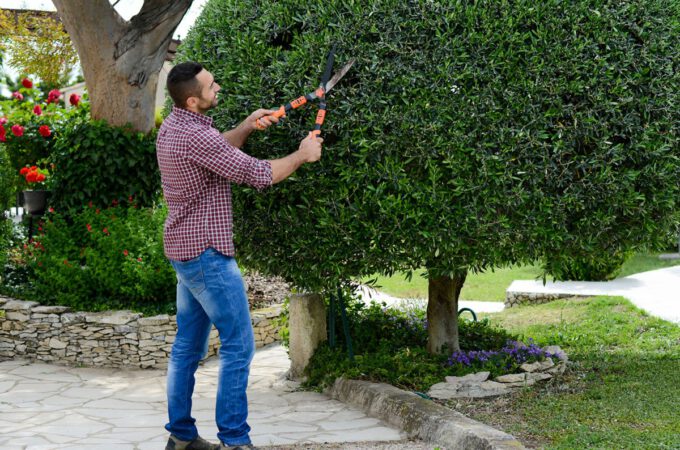The Importance of Proper Tree Trimming
Trimming trees, or pruning, is a crucial aspect of yard maintenance. It allows for proper growth, prevents damage, and maintains safety. Left unattended, trees will grow unevenly and become scraggly, unshapely, and unbalanced. In addition, overgrowth and extra branches can rob trees of the nutrients they need to thrive.

Aesthetics
A well-trimmed landscape with healthy, attractive trees will increase the value of your property and enhance curb appeal. However, using proper techniques when trimming large trees or attempting to do it yourself is important. Failure to do so can lead to injury and damage to your property and encourage the spread of pests and diseases. Hiring a professional tree service at https://www.tinostreeservice.com/ for larger trimming projects or complex branches that may be too high to reach is also a good idea.
When pruning is done for aesthetic reasons, it often involves removing excessive growth that creates an unsightly appearance. It can also help promote new growth that is more uniform in shape and size. Ideally, the cut should be made just outside the crotch of the branch and above the branch ridge (or collar). This will prevent unattractive “knuckles” from developing at the end of a stem, which is an indication of improper pruning.
In addition to promoting proper growth, aesthetic pruning can reduce the risk of storm damage. Branches that hang over houses or other structures should be trimmed to prevent damage to those structures when the weather turns harsh. Additionally, trimming can improve the appearance of a yard by removing branches that cast shade or block views.
Aesthetic pruning should only be performed on mature trees that are in good health. Little to no work should be done on baby trees, as they need time to grow and establish their own forms.
Pruning and trimming are both important aspects of maintaining healthy plants, but they have different functions and should be performed at different stages in a plant’s life. This guide will explain the differences between these two horticulture techniques and how they can be used to maintain both the beauty and health of your trees.
In general, pruning is a more extensive and comprehensive process than trimming. A trained horticulturist uses pruning to manage the form and growth of a tree, while trimming is more specific and focused on the removal of extra branches and leaves from the plant. It’s typically more effective to prune during a plant’s dormant season, which is usually in the winter or spring. This will minimize stress on the plant and prevent the onset of diseases that can occur as a result of over-pruning.
Health
During tree trimming, professional arborists remove overgrown branches to prevent their negative effects on the health of a plant. Overgrowth prevents the sun from reaching all parts of the tree, which hinders proper growth and exposes the plants below it to damage or disease. Trees that are trimmed regularly have a healthier appearance and are less likely to fall during a storm or strong wind.
As a general rule, the frequency of trimming depends on the individual needs of a tree. For example, the amount of sunlight it receives will affect how often a tree needs to be trimmed. In general, deciduous trees require more frequent pruning than evergreens. A professional will take into account the size of a tree, its climate, and its history to determine the correct trimming schedule.
Another benefit of regular trimming is that it helps trees and plants thrive. Overgrown limbs can shade desirable areas of the plant and inhibit growth, while dead or insect-infested branches can create significant safety risks during severe weather. By removing these unhealthy limbs, tree trimmers can promote more even growth and reduce the need for corrective pruning in the future.
Trees that are trimmed regularly increase the amount of photosynthesis they can perform. Properly positioned branches can allow all of the leaves to be exposed to the sunlight and help trees grow and bloom properly. By removing branches that are blocking sunlight, trimming services can also speed up the growth of shrubs and other plants located beneath the tree.
Lastly, overgrown limbs can cause damage to property when they fall during harsh weather. This could include damaging the roof of a house or hurting someone walking on a sidewalk under the tree. By removing the limbs before they become a hazard, tree trimmers can prevent these accidents from occurring and protect property.
In addition, overgrown limbs can interfere with everyday activities by blocking sidewalks and roads. Regularly trimming a tree can improve pedestrian flow, especially during busy times of the year. This is also important for maintaining the beauty of your landscape and increasing the aesthetic appeal of your property.
Safety
While it is important to prune your landscape trees for both health and aesthetic reasons, improper trimming can have serious safety consequences. The National Institute of Occupational Safety and Health reports that between 1980 and 1988, 181 workers died while conducting tree trimming and pruning operations. This is because of the potential hazards involved, especially when using power equipment. The risks are exacerbated when dealing with damaged or broken limbs after storms.
Before starting a trimming project, read and follow all the instructions and warnings that come with your equipment. This includes using personal protective equipment, such as gloves, eye protection and a hard hat, when cutting down a tree or working with its branches. In addition, it is important to mark off the area where you are working and prevent bystanders from accessing it. If the tree is located near a road, you should also assess whether signs and cones are needed to help direct traffic around it.
Depending on the type of tree being trimmed, you may need to use ladders or aerial lifts to conduct your work. For this reason, it is vital to inspect these pieces of equipment before each use to ensure that they are safe and in good condition. When you are ready to start the work, make sure that any ladder you use is tied to a strong branch and has proper footing. If you are planning to climb the tree, you should always have a partner with you and be prepared to retreat to the ground at any time if conditions become unsafe. It is also recommended that you wear high visibility clothing when working aloft.
Inspect the tree and ground for hazards like fallen limbs, electrical lines and cracks and splits in the trunk before beginning work. If you are working on a high tree, you should use a fall protection harness climbing rope or an aerial lift to protect yourself in the event of an accident. Avoid attempting to climb in wet, icy or windy conditions and be extra vigilant when working above the roadway: assess the speed of the highway and shoulder width and determine if you need to put up signs or cones to help direct traffic around your work site.
Maintenance
Tree trimming is one of the most crucial maintenance techniques for the overall health and beauty of your landscape. It is a way to ensure that your trees and shrubs are not overgrown, which can have several different negative effects on your landscape. It also helps to improve the appearance of your home by enhancing the aesthetics of your property.
Overgrown plants can look misshapen and unbalanced, which can negatively affect your entire landscape. It can also prevent proper growth for your plants, as they may not be getting the sunlight they need to thrive. Lastly, it can damage the structure of your plants and create hazards on your property.
The amount of pruning that is required on a plant is usually dictated by its current state of health and the surrounding environment. Branches that are dead or diseased should be removed, as well as any branches that are hanging over power lines, buildings, sidewalks, or driveways. These branches should be cut down to the ground level and disposed of properly.
Trimming can be done throughout the year to maintain your landscaping and encourage new growth. For flowering plants, pruning during winter or spring can increase their blooming production. Trees that are trimmed regularly will have more foliage to provide shade from the sun, which is important for evergreens and other heat-tolerant species.
Another benefit of regular pruning is that it can help to increase the value of your home or business. This is because the overall appearance of a property with well-cared-for trees and shrubs can be very appealing to potential buyers and guests. In addition, if you have fruit-bearing trees on your property, regular trimming can promote the formation of spurs and lead to an increase in fruit production.
Trees that are overgrown and dense can block out sunlight, which can have a negative effect on your lawn. Keeping your trees and shrubs trimmed can promote adequate light for grass growth and make your lawn more attractive.
